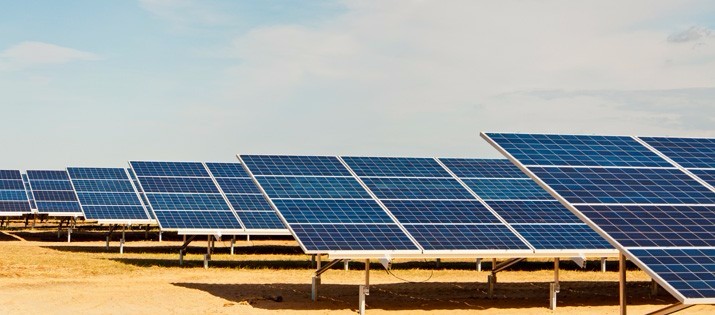Solar Developers struggling to secure Tax Equity or Sponsor Equity should consider a Sale Leaseback. You get 100% of the capital from the Bank, meaning you don’t need Tax Equity. It’s cheaper, easier, and lower cost. Zenergy is often asked: How does it work? Is it a good fit for our project? To answer that, we provide a simple overview of a Sale Leaseback, a few example numbers for your model, and basic investor eligibility criteria
Zenergy has a long history of working with small-mid size Developers on C&I and small utility-scale projects. Not only that, we also directly finance and acquire mid-size projects in our sister investment fund, SolRiver Capital. In both cases, we’ve helped structure and raise tax equity for these smaller deals under a Partnership Flip dozens of times. The Flip structure is still a good fit for many projects. However, over the last 18 months, we’ve started to see Sale Leasebacks become the better option in many cases. In this article, we explain what we’ve seen and how that applies to your projects.
Sale Leaseback vs Partnership Flip
Partnership Flips (and Inverted Leases) are currently more common amongst the large solar Developers and main Tax Equity investors. That’s because in the last 5-6 years, Developers made more under a Partnership Flip than a Sale Leaseback. However, as the cost of Sponsor Equity rises, that may no longer be true. More importantly, for Developers with smaller pipelines or smaller projects, securing Tax Equity with a Partnership Flip may not be realistic. That’s why you should consider using a Sale Leaseback.
Under a Sale Leaseback, Developers can raise 100% of the capital stack from a single Equipment Leasing Bank. The Bank buys the solar system from the Developer and then leases it back. In doing so, the Bank is able to take the Investment Tax Credit and accelerated depreciation. It passes the benefit back to the Developer in the form of lower lease payments. Said another way: the Bank monetizes the tax credit, so the Developer doesn’t need Tax Equity. That means the transaction is faster and cheaper compared to a Partnership flip involving three separate parties (aka three separate law firms). Plus, there are far more Sale Leaseback providers than Tax Equity Investors, so it’s easier to find someone to work with. Finally, because the deal is cheaper and easier, Banks will do smaller deals with less established Developers, as long as they have a credit worthy Offtaker.
Explaining a Solar Sale Leaseback
Many solar Developers we work with understand the conceptual benefit of a Sale Leaseback. What they don’t understand is how it actually works. Below is a simple overview of a Sale Leaseback’s mechanics. We begin with key concepts and a few illustrative price points for your model. We then explain the flow of funds, and how you (as the Developer) get paid. We touch on a few transactional considerations. Finally, we end with a snapshot of which solar projects and which Developers meet the Sale Leaseback providers’ qualifications.
A. The Mechanics of a Sale Leaseback: 1-2-3
Sale Leaseback mechanics are fairly straightforward. Under a Sale Leaseback, the Developer sells the Solar System to the Bank. The Bank simultaneously leases it back to the Developer under a long-term lease. At the end of the lease, the Developer purchases the System back from the Bank. We break it down by (1) the sale, (2) the lease, and (3) the buyout. Each step explained below.
1) The Sale
In a Partnership Flip, the Developer sells equity in the Project Company to Investors. The Investors get the right to the long-term cash flows. The Developer uses the invested capital to pay off the EPC (or construction loan), other costs, and keep the rest as a Developer Fee.
Under a Sale Leaseback, the Developer literally sells the solar system itself (not equity in the Project Company) to the Bank. The Bank will execute a Bill of Sale to purchase the System and cuts a check to the Developer for the Sale Price (net of some fees discussed below in Part B). The Sale Price is typically high enough to cover the EPC costs and a Developer fee.
The Sale Price paid by the Bank is capped at the lesser of two valuation methods. The first method is to calculate the fair market value (FMV) of the project. This is done by taking the net present value (NPV) of the after-tax cash flows using an 8.5% discount rate. The second method is to calculate the amount that yields a 1.18x coverage ratio.
Keep in mind, since the Developer sells the Solar System and not equity in the Project Company, the Developer keeps 100% of the Project Company. That means all project cash flows left each quarter after making the lease payment (called “Residual Cash Flows”) go to the Developer. The Developer can also keep the value of the Project Company on their balance sheet
Note about terminology: “Bank” vs “Lessor” – We keep referring to “the Bank” even though a Sale Leaseback isn’t a loan. Let me explain why. In a Sale Leaseback, the capital provider is technically called the “Lessor.” The Developer (or Project Company) is the “Lessee.” Most readers find “Lessor” vs “Lessee” confusing in a how-to-article, so we chose Bank and Developer. So why “Bank”? In reality, the typical Lessor often calls itself an Equipment Finance Company. Solar Developers need to find an Equipment Finance Company that is able to utilize the solar tax incentives and offer 8+ year lease terms. In our experience, the Equipment Finance Companies that meet our criteria are owned directly by a Bank, as opposed to a Lease Broker. Accordingly, in this article we refer to the Lessor as “the Bank.”
2) The Lease
The Bank then leases the System back to the Developer. Technically, the Bank leases it to the ProjectCo, which we assume in this article is owned by the Developer. The Bank structures the lease as an Operating Lease, so that they can claim the tax incentives. Leases range from 8-10 years. The rent is a fixed amount based on a monthly lease factor multiplied by the sale price. On a 10-year lease, many Banks will use a 0.00548 monthly lease factor. As an example, a sale price of $1MM with a 10-year lease would have rent payments of $5,480/month or $65,760/year.
Some Banks price leases differently. Some use a variable lease amount based upon a coverage ratio. This is common amongst longer term (15+ year) leases. Some Banks use a higher fixed lease factor, but allow a shorter term or lower buyout price. These Banks often require much stronger credit enhancement than described in this article.
The Lease functions in many ways like a loan. It is called a “hell-or-high-water” lease, which means the rent payment is due regardless of how the Project performs. All maintenance and administrative issues are the responsibility of the Developer, at its sole cost. Further, as part of executing the lease, the Developer is required to collaterally assign all the project documents (including the PPA and ProjectCo membership interests) to the Bank, in case the Developer defaults under the Lease.
3) The Buyout
At the end of the Lease, the Developer has three options:
- Buy the System back at its then FMV.
- Return the System to the Bank at the Developer’s expense.
- Extend the lease on new terms established with the Bank.
Most Developers plan to buy the System back. The buyout price is the System’s fair market value (FMV). Although this price cannot be set in advance, it is customary to assume the FMV will be equal to the NPV of the remaining contracted cash flows.
As a little tip: if the Bank assumes a higher buyback price (called “Residual value”), it will agree to a higher initial Sale Price.
B. How the Developer Gets Paid: Net Sale Proceeds
When the Bank first purchases the Solar System, the Developer does not receive the full Sale Price. They get the Net Sale Proceeds.
Before cutting a check to the Developer, the Bank deducts at least two fees from the Sale Price. The first are the lease transaction costs. The transaction costs include legal fees, IE reports, appraisals, and other diligence costs incurred by the Bank (See Sale Leaseback Transaction Costs Revealed for more detail). The second is the Lease Reserve required to cover potential rent shortfalls. The reserve amount equals between 3-9 months of rent and operating expenses.
Continuing with the previous example, let’s say that the EPC costs of the project are $750k and the Sale Price is $1MM. The Developer thinks they get the remaining $250K as a fee. However, assume that the Lease Reserve is $16,440 (3 months of rent) and the transaction costs are $70k. The Bank automatically deducts this $86,440 from the $1MM Sale Price, and cuts a check to the Developer for only $913,560 (the Net Sale Proceeds). The Developer uses $750K to pay the EPC costs (or construction loan), leaving them with $163,560.
C. Other Considerations
Many Sale Leaseback agreements cover multiple systems. The Sale for each system is executed when the System is “placed in service.” This means the Developer needs to find a way to finance construction. Sometimes, the Bank will offer a construction loan, as a separate but related transaction.
The Bank will require a Lockbox be put in place. That means all project income and expenses flow through that account, which is controlled by the Bank’s trustee. Distributions are held back until certain coverage ratios are satisfied. The Lockbox “service” does not come cheap.
D. Who Can Use a Sale Leaseback?
In general, Sale Leasebacks are most appropriate for smaller Developers and are evaluated by Banks on two primary criteria (1) Project Size and (2) Credit Worthiness.
1) Project Size
In a standard Tax Equity Partnership Flip, the minimum deal size most Banks will consider is $20MM. In a Sale Leaseback, Banks will consider significantly smaller deal sizes, going as low as $2MM.
2) Credit Worthiness
Developers with short track records and limited balance sheets can still enjoy the benefits of a Sale Leaseback. Banks will instead look at the credit-worthiness of the Off-taker as a proxy, so long as the Off-taker is investment grade.


